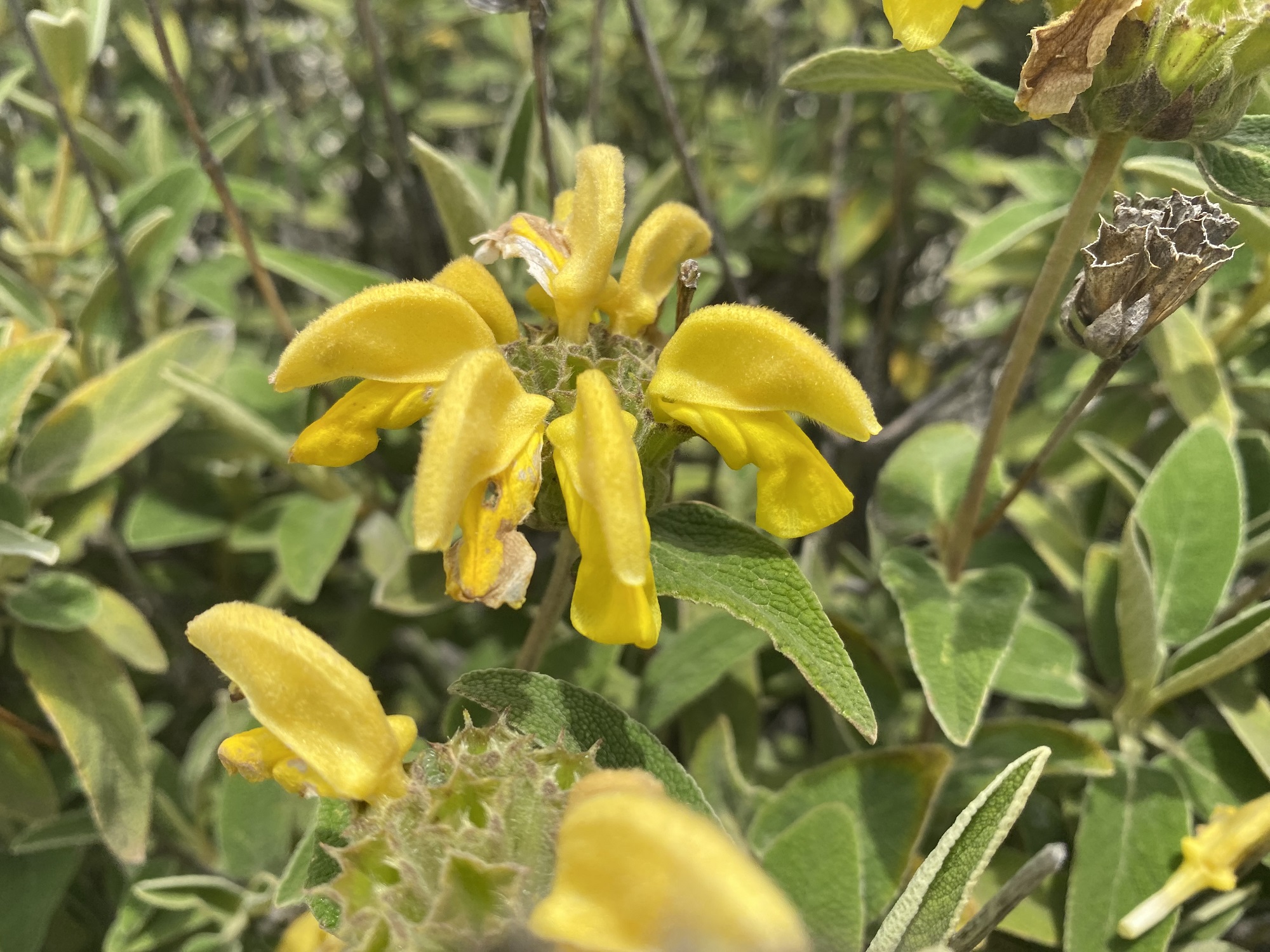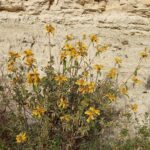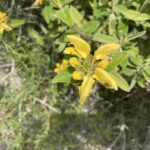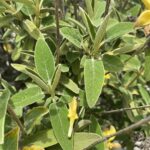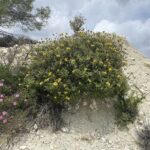Φλόμος, Φλομίς η βραχυβράκτια
Etymology of Phlomis brevibracteata: "Phlomis" derives from the Ancient Greek "φλομίς" which means "flame", referring to the appearance of its flowers. The epithet derives from Latin; "brevi-" means "short" and "bracteata" means "having bracts", thus "short-bracted".
There are five Phlomis kinds/taxa (species and subspecies) in Cyprus, of which two of them appear exclusively in the occupied northern Cyprus (Kerynia district). An additional 6th kind -a species- has extinct.
It is a shrub with upright square and hairy shoots, reaching a height of up to 2 meters. The leaves are simple, rather hairy on the underside. The flowers are also yellow, many together, on spines, and the fruit is 4 caryas.
Phlomis brevibracteata is a rare indigenous, endemic plant in Cyprus, strictly protected by law. Phlomis brevibracteata is considered a vulnerable species in Cyprus. It does not appear in the vast Mesaoria region as well as in the Akamas region. It is encountered at an altitude of 50-925 metres. It prefers igneous or limestone slopes, especially where are or used to be pine trees. It is found at least in some areas of the Pentadaktylos mountain range (Kerynia district), in areas of Lefkara, in Kakoratzia near Kofinou village, and Kalavasos (Larnaca district), north of Agios Nikolaos near Mandria village (Pafos district), Trimiklini, and western of the Kouris dam, on Souni village territory, where there used to be a pine forest before the countless wildfires (Limassol district). Its flowering period is around May and June.
How to identify Phlomis brevibracteata:
In the territory controlled by the Republic of Cyprus you will encounter Phlomis brevibracteata, cypria subspecies occidentalis, and lunariifolia, which look similar to the human eye. Their key characteristics that differentiate them are the following:
Phlomis brevibracteata can be found in several areas of Cyprus (central-eastern Pafos district, southwestern Larnaca district, and central-southern Limassol district), but still it is endangered. Its bracteoles are very small, only 2-5 mm long, and less than half the length of the calyx (a bracteole is a small leaf of the leaf-like structure directly subtending a flower or inflorescence whose stalk itself is subtended by a bract - see picture below). Additionally, its lips are more or less even in length. The upper and lower side of the leaf are green.
Phlomis cypria subspecies occidentalis is said to exist only in northwestern Pafos, near the village of Lysos. Its bracteoles are more than 5 mm long, usually almost as long as the calyx or a little longer. Its upper lip is shorter, pubescent and curvy; its lower lip is longer and wider but with less pubescence. The upper side of the leaf is green and the lower side is green or almost green.
Phlomis lunariifolia is not an endangered species in Cyprus; logic implies it is more common than the other two. It appears at a lower altitude than the other two, up to 600 metres in western Cyprus only (the others up to 925 and 800 metres respectively). Its bracteoles are more than 5 mm long, usually almost as long as the calyx or a little longer; they are thinly pilose, with hispid-ciliate margins. The apex of the calyx bears 5 spreading, spinous awns 2.5-4 mm long. Its upper lip is shorter than the lower lip. The upper surface of their leaves is vivid green and the lower is white/grey.
